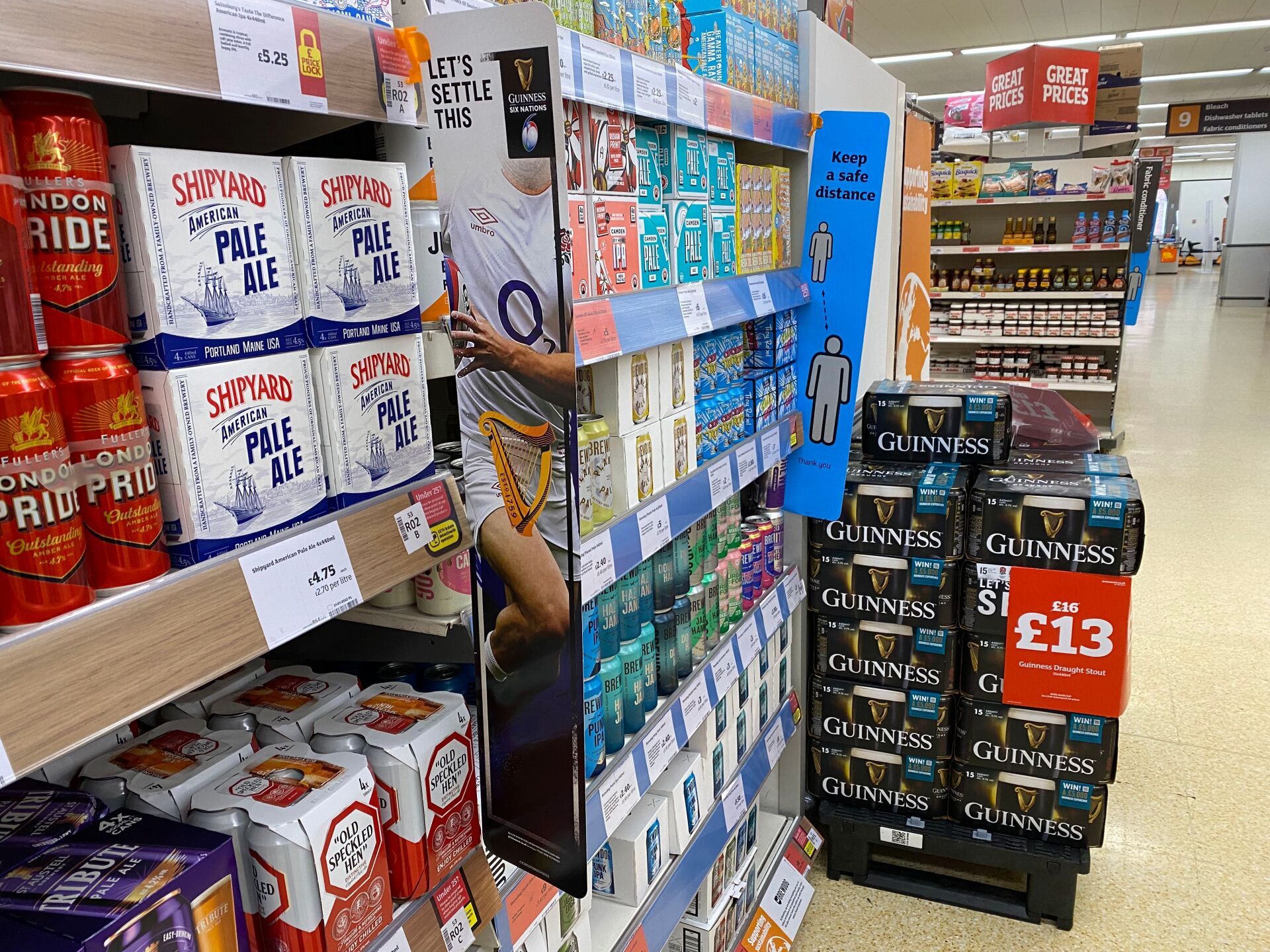
Shopping is complex. The supermarket is one of the most visually overwhelming environments, packed with thousands of products, promotions, and point-of-sale (POS) materials—all competing for shoppers’ attention and, ultimately, their wallets. Yet, effective shopper marketing isn’t about adding to the noise. It’s about cutting through it. To do this, we need to truly understand the shopper: their missions, their mindset, and what influences their purchasing decisions. The Power of Shopper Missions According to retail expert Paco Underhill, understanding the shopper is the key to effective selling. For marketers, this means recognizing the triggers and barriers to purchase and identifying how to meet or exceed shopper expectations. A crucial part of this is understanding the shopper mission—the core reason for their visit. Missions dictate in-store behaviour, from which aisles they navigate to how much time and money they spend. Every shopper has a goal, whether it’s a planned stock-up trip or a quick top-up shop. But the reality is often more nuanced. Even the most structured shopping trips can include unplanned moments: a shopper picking up a greeting card for a birthday, grabbing snacks for a game night, or being enticed by an impulse purchase. Over-simplifying shopper missions can lead to marketing plans that miss these real-life behaviours, reducing their effectiveness. How Shopper Missions Influence Marketing Success So, how do we ensure our shopper marketing efforts align with these missions? It starts with strategic planning: Location Matters: Shoppers develop mental maps of stores, navigating them based on their needs. If your promotion or POS materials aren’t positioned along their path, they’ll be ignored. For example, a shopper looking for meal inspiration is likely to visit fresh produce or the meat aisle first. Placing secondary product displays with recipe ideas nearby can spark inspiration and increase basket size. Mission-Based Messaging: Understanding why a shopper is in-store helps tailor messaging that resonates. A campaign targeting a weekly stock-up shopper should emphasize value and bulk savings, while a convenience-driven shopper may respond better to speed and ease. Touchpoint Selection: With numerous shopper media options available, marketers must choose the right mix of touchpoints to engage shoppers effectively. This requires a deep understanding of media performance along the shopper journey to maximize ROI. The Science of Persuasion: The Power of the Call to Action Finally, one of the most critical elements of any shopper marketing campaign is the call to action. This is the last, and sometimes only, opportunity to convince a shopper to choose one brand over another. With just a second to capture attention, the message must be clear, compelling, and relevant to the shopper’s mindset in that moment. Turning Insights into Action By understanding shopper missions, retailers and brands can create targeted campaigns that not only capture attention but also drive real engagement and sales. The right placement, the right message, and the right call to action—when executed effectively—can make all the difference between being seen or being overlooked. At BASE , we help brands decode shopper behaviour, optimize touchpoints, and maximize marketing ROI. Get in touch to discover how we can elevate your shopper marketing strategy and drive impactful results.

In May 2002, the Financial Times declared, “Supermarkets Get The Message,” recognizing the growing synergy between retailers and advertisers targeting the same consumers. The article highlighted a simple but powerful idea—the best time to influence shoppers is while they shop. Fast forward to today, and retail media has evolved into a central pillar of marketing strategy, with a particular focus on digital media networks . With retail media spend expected to reach £121 billion by the end of 2024 and forecasts predicting that retail media will surpass broadcast TV by 2025, it’s no surprise that retailers are heavily investing in media networks. The rapid expansion of digital media networks presents both opportunities and challenges for shopper marketers tasked with stretching limited budgets across countless touchpoints. The good news? Behavioural science and shopper psychology offer clear guidance on how to cut through the noise and make the most of these investments. Behavioural Science: Understanding Shopper Attention Research shows that shoppers encounter a flood of messages on a typical shopping trip. Many of these messages go unnoticed, as shoppers are focused on their tasks and have limited attention to spare. Digital media networks offer a way to break through the clutter, but success depends on understanding how shoppers process information. Shopper psychology, including insights from Paco Underhill’s work, emphasizes the importance of seeing the world from the shopper’s perspective. At every point in the shopper journey, marketers must ask: What is the shopper thinking or feeling? and What do we want them to think or feel? Carefully planned touchpoints aligned with the shopper’s journey can transform moments of distraction into moments of engagement. Screen Placement: Why Visibility Matters A key rule in digital media: if it’s not seen, it’s wasted investment. Humans cannot read with their peripheral vision, so screen placement is critical. Screens must be positioned within the shopper’s direct line of sight to maximize visibility. Research shows that shoppers viewpoint-of-sale materials for just a second or two—barely enough time to register a message. Poorly positioned screens risk delivering blurred, ineffective impressions. When screens are well-placed, they can drive familiarity through the mere exposure effect, priming shoppers to recognize and recall messages. However, if the message appears too early in the shopper journey, it may be forgotten by the time they reach the relevant category—unless the product is immediately within reach when the screen captures their attention. Motion and Simplicity: Keys to Capturing Attention Digital media has one major advantage over static displays: motion . Our brains are wired to prioritize moving objects, triggering the fight-or-flight response and capturing attention. But grabbing attention is only half the battle. The message must be: Simple and clear enough to understand within 1-2 seconds . Designed with a compelling call to action that aligns with the shopper’s current position in their journey. Unlike television, digital screens in-store are fleeting touchpoints. The content must focus on minimal text, bold visuals, and a shopper-centric message that drives action. Test, Learn, and Evolve As digital media networks continue to grow, brands should treat them as valuable, long-term shopper touchpoints. Testing and learning what works—and what doesn’t—is essential for optimizing future investments. Digital screens can amplify brand presence, inspire shoppers, and enhance engagement in an increasingly competitive retail environment. Want to drive better engagement with your shopper marketing investment? Contact BASE to see how we can help you manage, measure, and maximise the impact of your digital media strategy.

The explosion of digital marketing has disrupted traditional media formats and whilst it has increased our ability to target, it has made it increasingly hard to generate cut through. When and where consumers receive and digest media has also changed dramatically with an increasing number of touch points all the way along the path to purchase. Shopping channels and missions are also evolving rapidly with e-Commerce, and convenience expanding exponentially offering new opportunities but also even more complexity. Navigating these choppy, ever changing waters is challenging, but exciting, as it is forcing us to learn new approaches and skills to drive both consumer and shopper penetration and loyalty. Effective planning and investment choices are critical to winning in this new media landscape. Increasingly the effective use of data, and subsequent targeting, is key to building a winning strategy. At Heineken we have increasingly seen shopper and trade marketing as a critical aspect of the marketing mix that can drive both ours and our customers business. We see this discipline as an essential investment choice as not only does it drive brand equity but it ultimately can result in a direct sale at Point of Purchase. Delivering effective shopper marketing, can really drive cut through, accelerate trial and conversion when it matters most – at the moment of the purchase decision.
"If you can't measure it, you can't improve it." - Peter Drucker
Let BASE show you how to TRULY measure your shopper marketing campaigns








